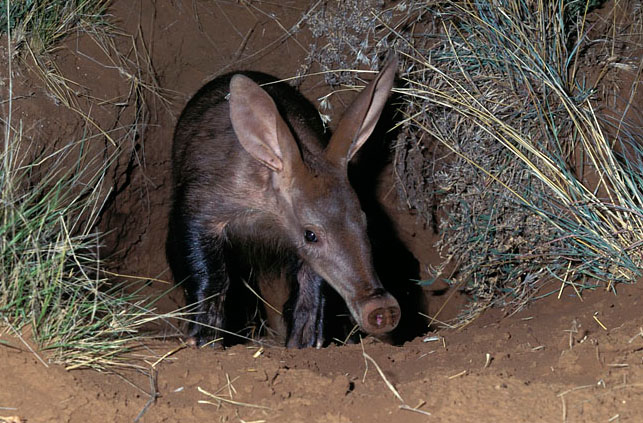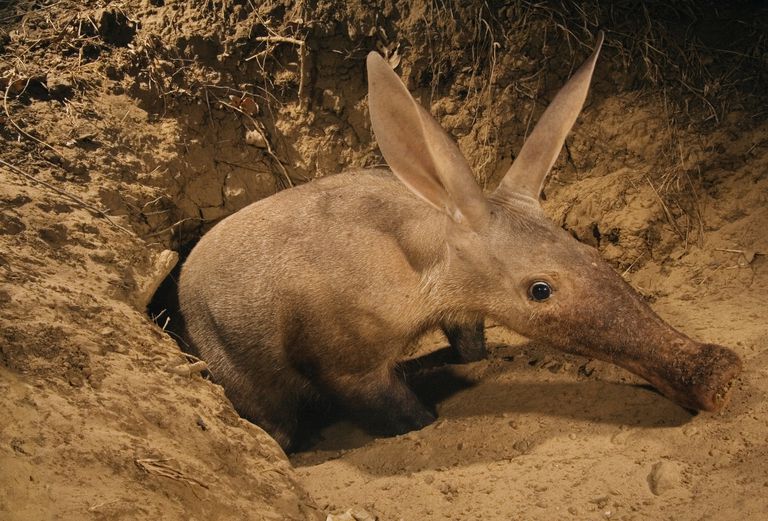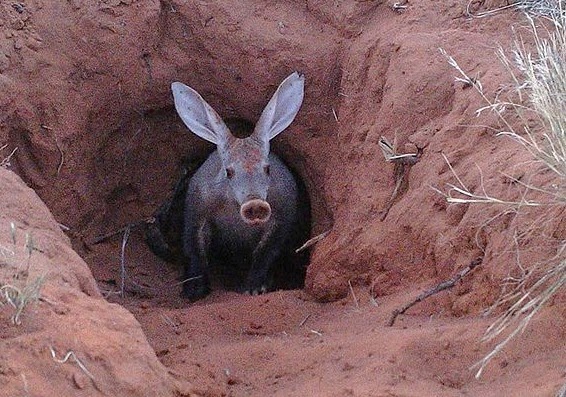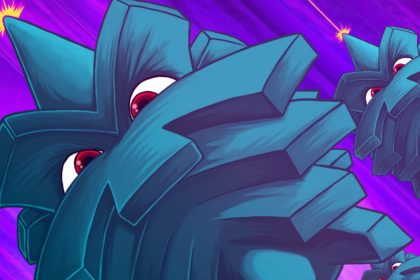The aardvark is a small nocturnal animal that lives almost exclusively in Africa. Not many people even know that this animal exists. Therefore, we have created a list of 30 fun and weird facts about aardvarks to get you acquainted with this amazing animal.
1. The aardvark is the only living species of the Tubulidentata order.
2. The aardvark is sometimes called the “African antbear” or the “Cape anteater” after the Cape of Good Hope.
3. The aardvark’s name comes from earlier Afrikaans, and it means “earth pig” or “ground pig” because it burrows deep underground for shelter.
4. The aardvark weighs between 130 to 180 pounds, or 60 to 80 kilograms.
5. The aardvark is 3.44 to 4.27 feet long, or about 105 to 130 centimetres, however, it can reach lengths of 7 feet 3 inches, or 2.2 metres, when it’s tail is taken into account.
6. It’s the largest member of the proposed clade Afroinsectiphilia.
7. Aardvark’s have very unique teeth. Instead of having a pulp cavity, each tooth has a cluster of very thin, upright, hexagonal parallel tubes of vesodentin, which is a slightly modified version of dentine. Each one of these teeth is held together by cementum.

8. Aardvark’s teeth don’t have any enamel coating like ours, and they are constantly worn away and regrow.
9. In terms of its genetics, the aardvark is like a living fossil, as its chromosomes are conserved, reflecting a lot of the early eutherian arrangement before the divergence of the major modern taxa.
10. Aardvark’s don’t like the heat or the sun, so they spend the daylight hours in dark underground burrows that they dig.
11. They avoid watery and rocky terrain because it gets in the way of their burrowing.
12. In captivity, aardvarks live for up to 23 years.
13. The aardvark can eat up to 60,000 ants and termites in one night. This is largely thanks to its 30 centimeter long sticky tongue.
14. Aardvark’s are able to seal their nostrils in order to keep dust and ants out.
15. They have very bad eyesight but have ana amazing sense of smell and can hear sounds from vast distances.

16. Aardvark’s have spoon shaped claws that are extremely sharp. They use these to break through the hard ground when they burrow and to defend themselves from predators.
17. Their burrows, which are often found in termite mounds, can be up to 13 meters long and have up to seven entrances.
18. Aardvark’s change their burrows very frequently, which allows wild dogs, pythons and warthogs to take up residence.
19. They travel up to 16 kilometers at night, foraging for food and avoiding predators on the way.
20. Due to the their ancient genome, aardvark’s are the most closely related to elephants.
21. Most aardvarks would prefer to eat only ants but population limitations and seasonal changes causes them to eat a lot of termites as well.
22. Aardvarks can break into termite mounds, which are sometimes as hard as concrete, and eat the entire colony. They will sometimes ingest the insects through their nostrils as well.
23. One aardvark can have a territory of a few square miles, and sometimes doesn’t return to the same area for seven weeks. This gives the local insect population a chance to rebound.
24. They have an ability to close their nostrils when they dig in order to keep out dirt and bugs.

25. Their extremely thick skin protects them from any termite and ant bites.
26. Aardvarks usually have only one offspring at a time. The offspring is always born in the den and the female aardvark takes care of it for one year.
27. Aardvark’s burrows can sometimes be over 10 meters long.
28. Their burrows can have numerous entrances. However, it’s usually 7 to 10 different entrances.
29. Aardvarks play a very important role in the African ecosystem because their abandoned burrows are used by many other African animals.
30. They can dig burrows so quickly that they sometimes use it as a defense mechanism against predators.



